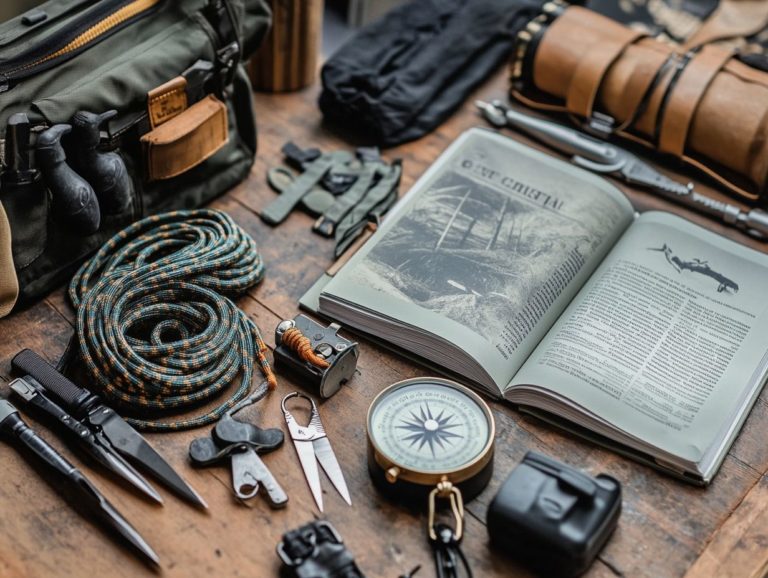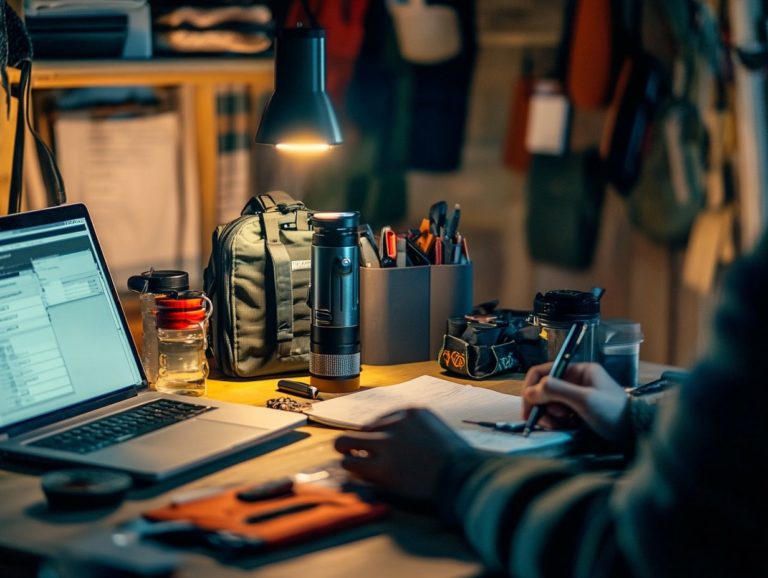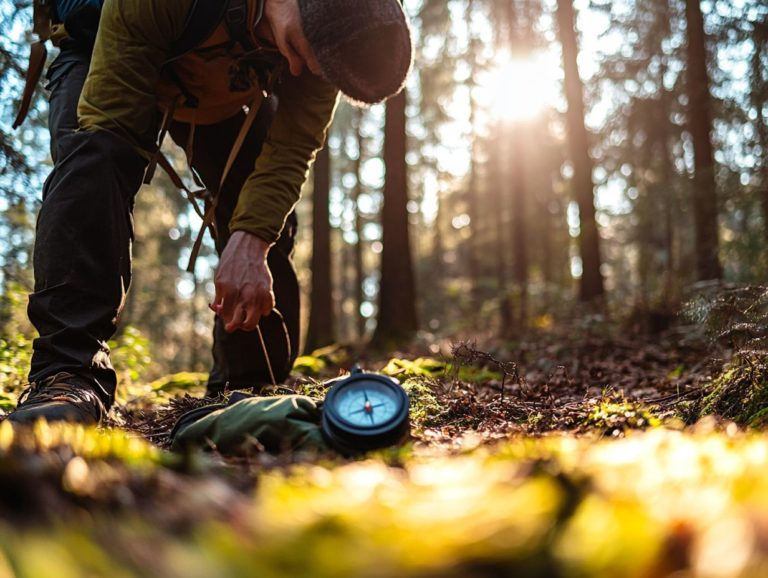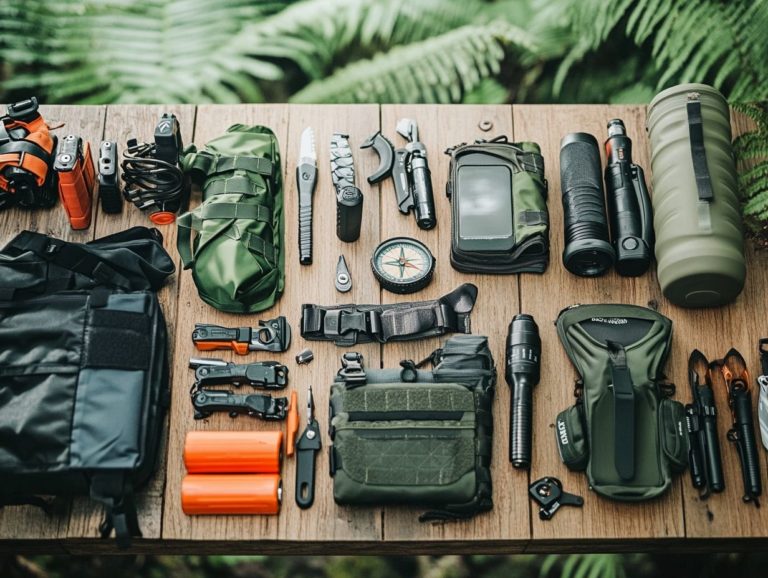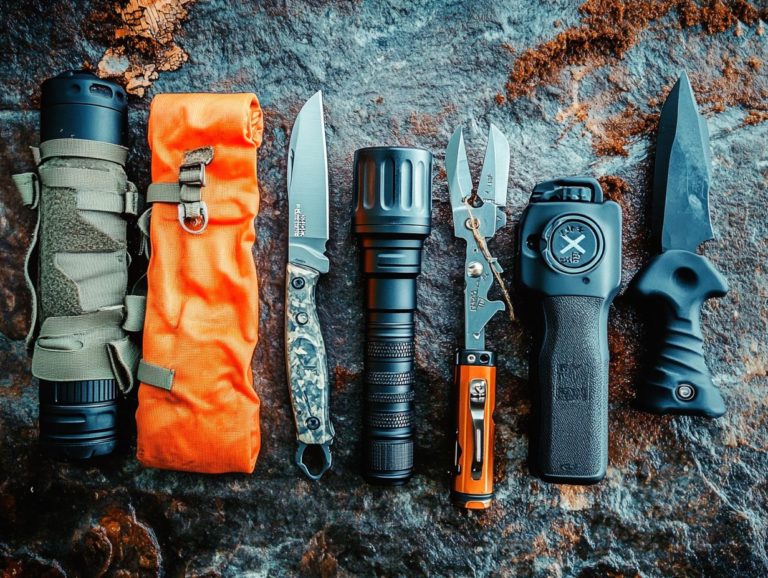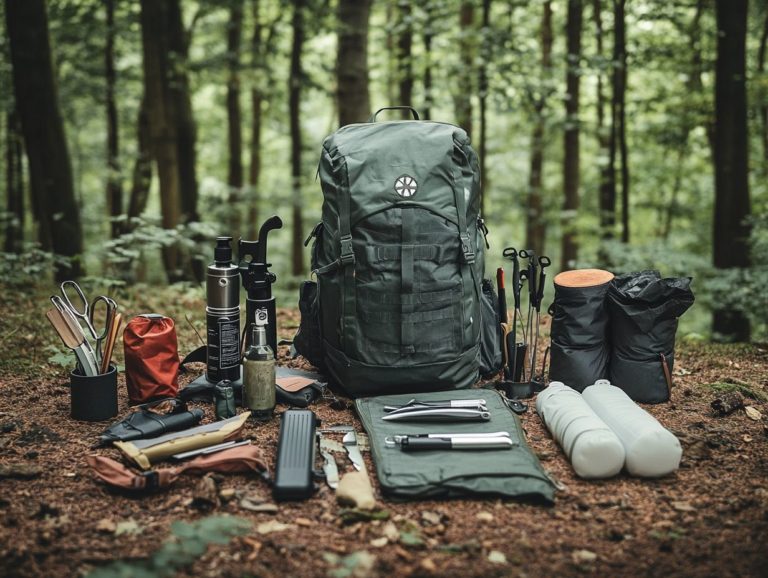The Most Common Survival Gear Mistakes
Choosing the right survival gear is crucial for anyone heading outdoors or preparing for emergencies. Don t let common mistakes jeopardize your safety.
It’s easy to make mistakes that could compromise your readiness. Overlooking important items or neglecting gear maintenance can have serious consequences.
This article explores the pitfalls you should avoid, offers survival strategies for various environments, and guides you in customizing your gear to fit your unique needs. Stay sharp and gear up for anything that comes your way!
Contents
- Key Takeaways:
- Common Mistakes in Choosing Survival Gear
- Mistakes in Maintaining Survival Gear
- Survival Gear Strategies for Different Environments
- Frequently Asked Questions
- What are the most common survival gear mistakes?
- How can I avoid making these mistakes?
- Are there any specific items that are often forgotten in survival gear?
- Why is it important to regularly check and maintain survival gear?
- Can using the wrong type of survival gear be dangerous?
- Is it necessary to have multiple sets of survival gear?
Key Takeaways:
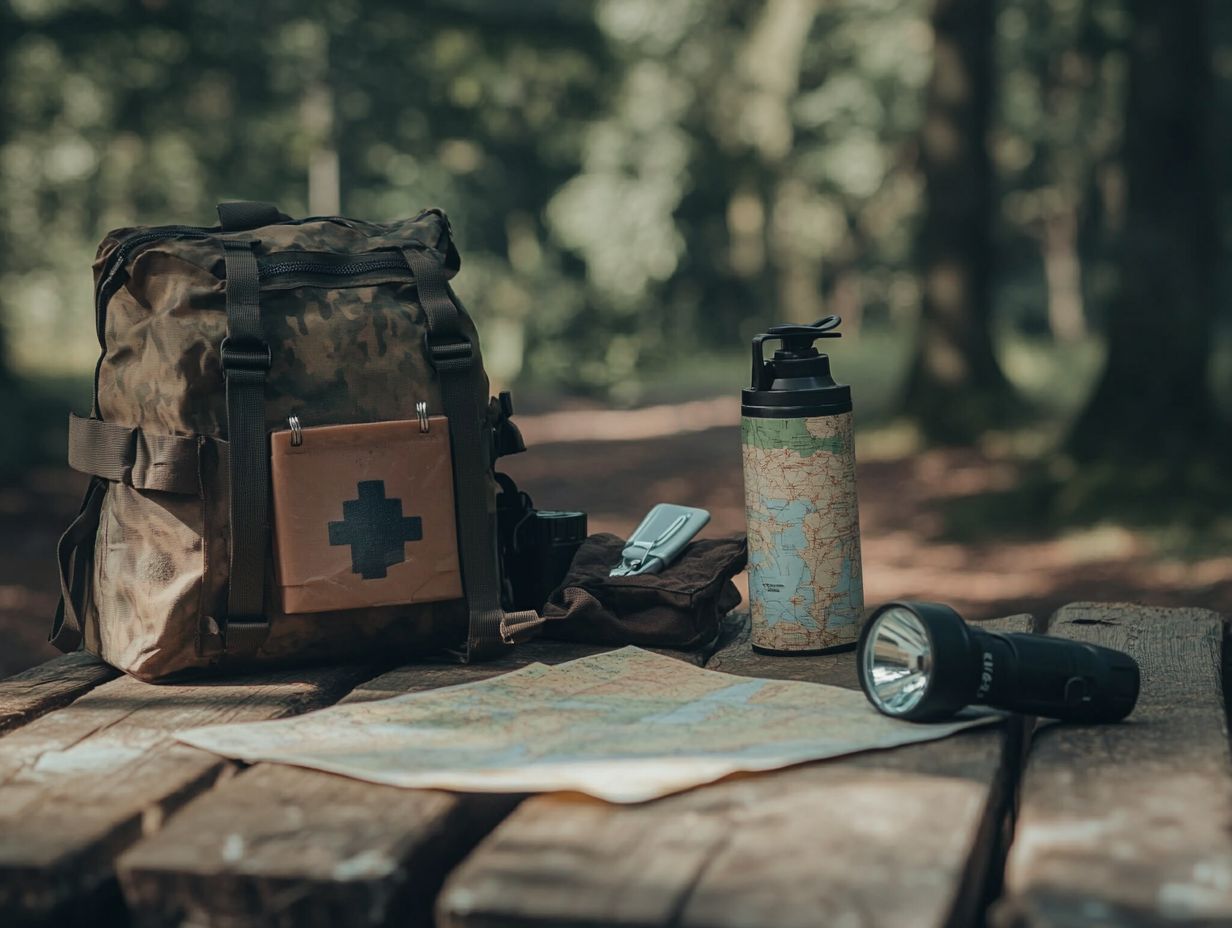
- Don’t overlook essential items when choosing survival gear. It’s easy to get caught up in fancy gadgets, but basic necessities like food and water should always be prioritized.
- Consider your personal needs and abilities when selecting gear. What works for one person may not be suitable for another. Take into account your physical abilities and any specific medical needs.
- Regularly maintain and properly store your gear. Neglecting maintenance can lead to gear failure when you need it most. Make sure to check and replace items as needed.
What is Survival Gear?
Survival gear includes essential tools and equipment tailored for wilderness survival, allowing you to navigate various situations while ensuring your safety and comfort outdoors. This gear features items for building a fire, navigational tools like maps and GPS, and equipment for purifying water. It helps you maintain warmth and avoid wilderness dangers.
Understanding effective survival gear is crucial for both seasoned adventurers and newcomers, as it lays the groundwork for emergency preparedness and successful outdoor experiences.
Among the key components of your survival gear, multi-tools are valuable. They are tools that can help with different tasks, like cutting and screwing. First-aid kits play a vital role, providing supplies necessary to manage injuries and prevent infections.
Durable outdoor clothing, including moisture-wicking base layers and insulated jackets, helps regulate your body temperature in unpredictable weather. Lightweight cooking gear allows you to prepare meals efficiently, while high-quality tents and sleeping bags provide secure shelter for rest.
Recognizing the importance of each tool enables you to face unexpected challenges with confidence.
Common Mistakes in Choosing Survival Gear
Selecting the right survival gear is essential, but many individuals, especially first-timers, often make critical mistakes that can compromise their safety and effectiveness in survival situations, such as getting lost or eating the wrong things.
These missteps may involve overlooking important items, not considering personal needs and abilities, and disregarding the necessity of gear tailored for specific environments, including proper gear for winter survival.
By recognizing these pitfalls, you can enhance your preparation for outdoor adventures and pave the way for a successful wilderness survival experience, improving your survival skills and danger awareness.
Overlooking Essential Items
One of the most significant pitfalls in wilderness survival is overlooking essential items. This can severely hinder your ability to navigate a survival situation effectively. It’s especially important to be prepared for the elements like rain or snow.
When faced with the challenges of nature, items like water purification tablets which help you turn unsafe water into safe drinking water or filters become critical. Imagine the nightmare of being parched with no way to purify water!
The ability to build a fire not only provides warmth and light but also serves as a signaling device for rescuers. That s why fire-starting materials, such as waterproof matches or lighters, are essential in your survival kit.
A reliable compass or GPS system is your best friend for accurate navigation. These tools help you avoid disorientation that can lead to perilous situations or the risk of getting lost.
Quality shelter-building tools like tarps, paracords, and a sturdy knife are vital for crafting a safe space to rest. They protect you against harsh weather and ensure your overall well-being in the wild. With the right tools, you can turn a survival situation into a manageable adventure.
Not Considering Personal Needs and Abilities
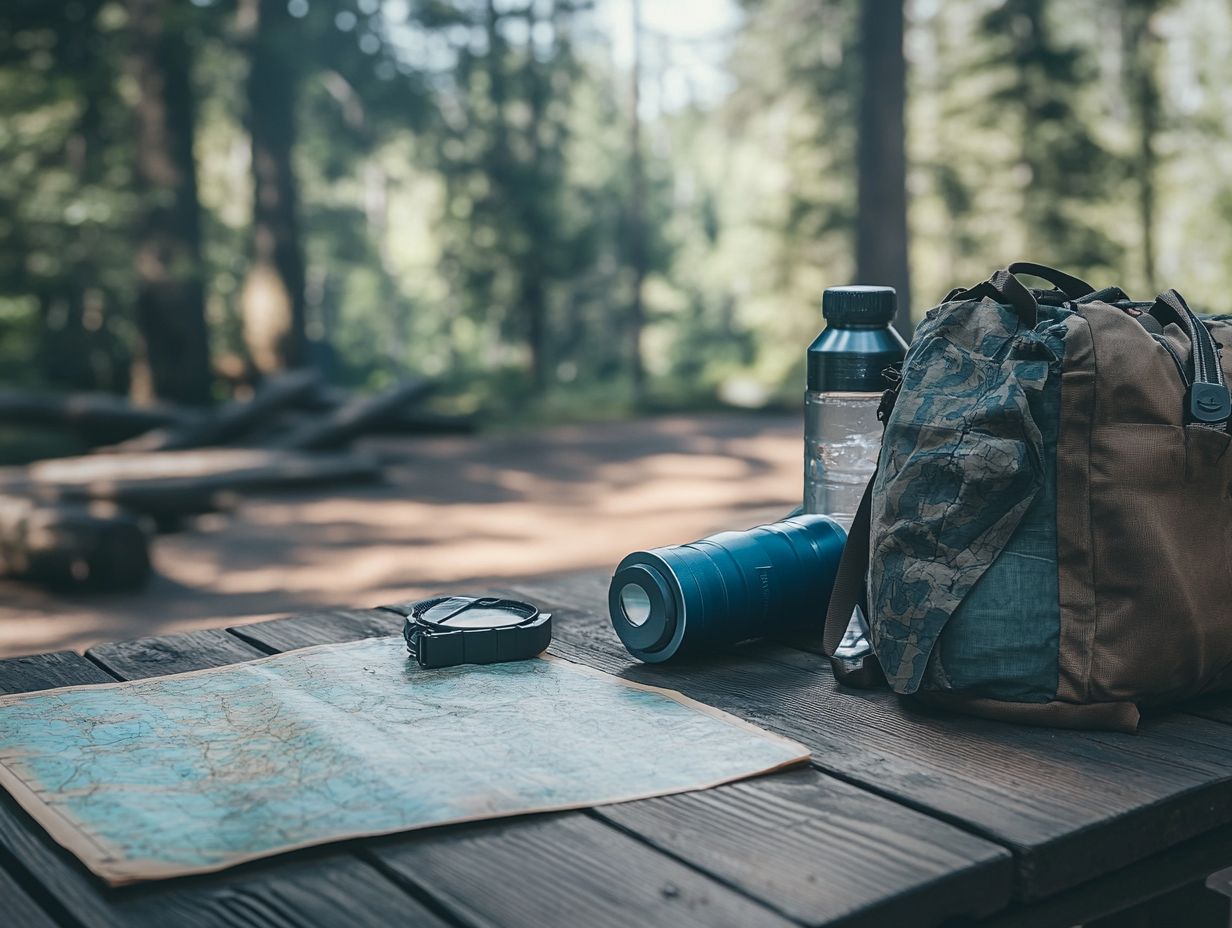
When choosing survival gear, it s crucial to consider your personal needs and abilities. Overlooking these can lead to uninspired decisions, particularly if you re new to the wilderness. Each person has a distinct set of survival skills, physical fitness levels, and comfort with outdoor situations.
This tailored approach can elevate both your safety and effectiveness in the great outdoors. An experienced hiker might gravitate toward lightweight equipment that promotes agility and speed. Meanwhile, a beginner may benefit from a more comprehensive setup that includes thorough emergency kits and instructional resources on camping tips and food sources.
Environmental conditions are another vital factor. Someone navigating a humid rainforest will need different clothing and tools than someone gearing up for a s snowy mountain trek. Choosing the right outdoor clothing will help you stay dry and warm.
By evaluating your strengths, weaknesses, and the specific challenges of your surroundings, you can ensure you re equipped with the right survival strategies. This helps you flourish in various outdoor situations while avoiding panic in difficult circumstances.
Mistakes in Maintaining Survival Gear
The meticulous maintenance of your survival gear is as essential as your initial choices. Yet, many individuals inadvertently make mistakes that could jeopardize the effectiveness of their equipment when it matters most.
Common missteps include recognizing risks and understanding the importance of outdoor safety, including:
- neglecting regular maintenance
- improper storage and care
- failing to check gear functionality before venturing outdoors, which is particularly vital when preparing for adventures in wilderness areas.
By addressing these pitfalls, you ensure your survival equipment is primed and ready to support you in emergencies. This significantly enhances your wilderness survival capabilities and overall outdoor safety.
Neglecting Regular Maintenance
Neglecting regular maintenance of your survival equipment can lead to failures at critical moments in wilderness scenarios. This could potentially put lives at risk. Make it a habit to regularly check your tools for functionality, clean your water purification systems, and ensure your fire-building tools are in optimal condition.
It’s essential to keep a vigilant eye on the state of your rations, first aid supplies, and navigational gear. As a backpacker or camper, ensure that your food items are securely stored to prevent spoilage and deter pests. Your first aid kit should be replenished after each adventure.
Additionally, verify that your maps and compasses are current and functioning well. Losing your direction in the wild can be disorienting. These essential maintenance tasks prepare your survival gear for action and instill a sense of confidence, knowing you can rely on your equipment when unforeseen emergencies arise.
Take action now! Regularly assess your gear and ensure you re fully prepared for any wilderness adventure!
Improper Storage and Care
Improper storage and care of your survival gear can seriously undermine its effectiveness and reliability during your outdoor adventures. This could potentially lead to failures in critical survival situations. If you store your gear in damp or unprotected areas, you risk damage. Failing to keep it organized might mean missing essential items precisely when you need them most.
Proper storage practices are vital to your emergency preparedness. They ensure that everything is accessible and in optimal condition.
To maintain your readiness, consider investing in waterproof bags or containers. These provide a reliable barrier against moisture and debris. Make it a habit to regularly inspect and maintain each item. Check for wear and replace any damaged components to ensure peak performance.
Organize your gear by category or purpose in labeled bins to streamline access during an emergency. Create an inventory list to enhance your preparedness, ensuring that nothing is overlooked.
Embrace these best practices to boost your survival strategies. This results in a heightened sense of confidence and capability when faced with unexpected challenges in the wilderness.
Survival Gear Strategies for Different Environments
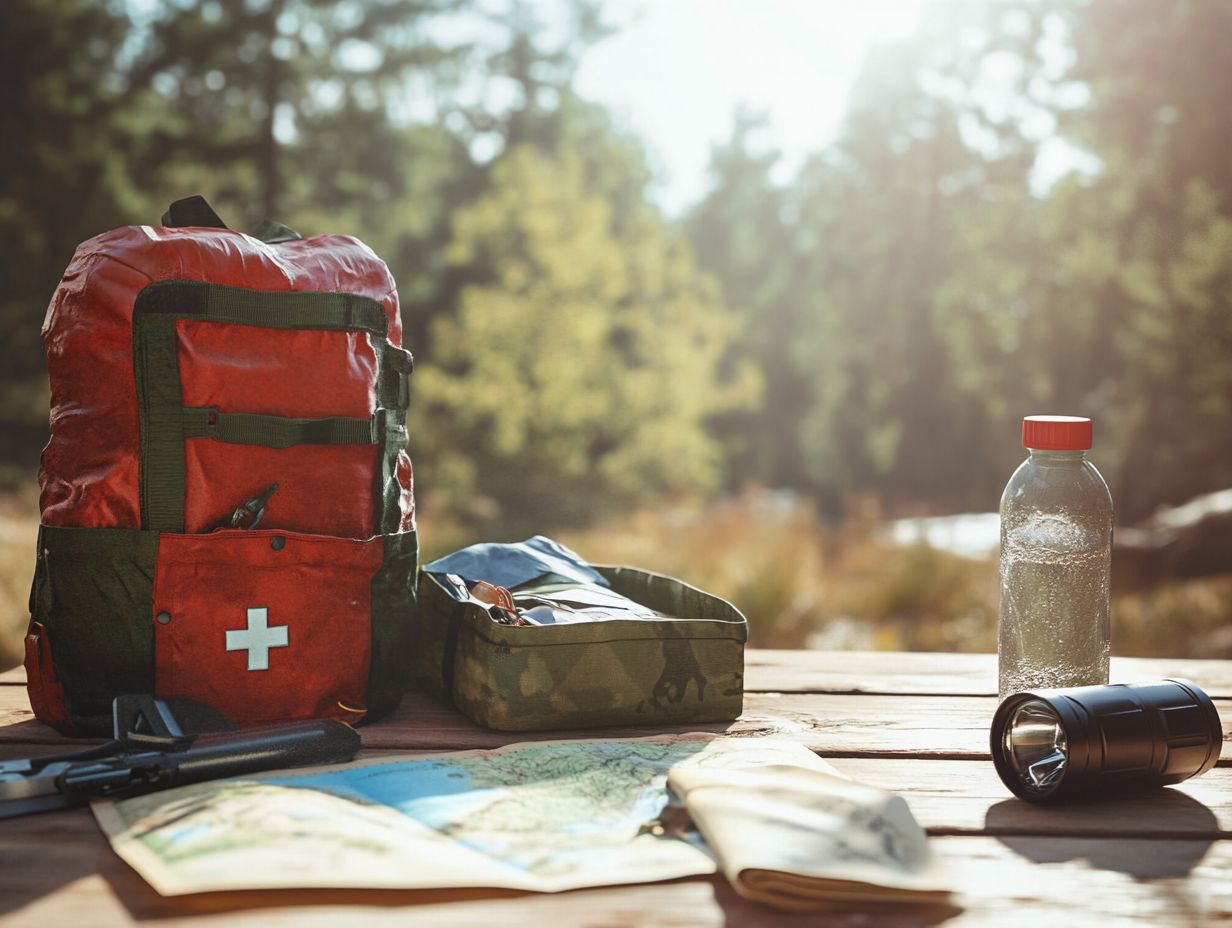
Survival gear strategies should be meticulously tailored to diverse environments. Each setting introduces its own set of challenges and wilderness threats that demand thoughtful consideration for effective survival, including understanding local wildlife encounters.
Elements such as climate, terrain, and potential wildlife encounters significantly influence your gear selection and strategies. Therefore, it’s essential to adapt your preparation based on the specific environment you intend to explore.
Grasping these nuances is fundamental to ensuring successful outdoor adventures and robust emergency preparedness. This includes learning about local edible plants and weather prediction.
Essential Gear for Different Climates
Choosing the right gear for different climates is crucial. Each climate presents unique challenges. In winter survival scenarios, for example, prioritizing proper outdoor clothing and insulation layers layers of clothing designed to keep you warm is key to maintaining warmth and minimizing the risk of hypothermia.
In hot climates, lightweight and breathable materials are crucial for keeping cool and staying hydrated. By understanding the specific requirements of various climates, you can make informed choices about your gear.
To avoid common mistakes, you’ll want to consider essential items such as:
- Moisture-wicking base layers
- Insulated gloves
- Fire-building ability
- Thermal hats
These are designed to trap heat and repel moisture in colder environments. If you re venturing into hotter regions, don t forget to include:
- Sun-protective clothing
- Wide-brimmed hats
- Water purification
- UV-blocking sunglasses
These will shield you from harmful rays. Quality weather prediction tools, like portable barometers and reliable apps, can further enhance your safety by providing real-time updates on changing conditions. This allows you to adjust your gear and plans as needed. Ultimately, having the right equipment tailored to the climate not only ensures your comfort but also strengthens your overall survival strategies.
Don’t wait! Make sure you have all essential items for your next adventure. Prepare now to face the wilderness with confidence!
Adapting Gear for Specific Situations
Adapting your gear for specific situations is crucial for wilderness survival. The effectiveness of your survival equipment can vary greatly depending on the challenges you face. For instance, if you find yourself in a survival situation involving bears, having bear spray, knowledge about avoiding predators, and tools for signaling for help is essential.
Adjusting your gear to meet the unique risks and requirements of each scenario significantly enhances your survival skills and preparedness in the great outdoors.
If you’re in a water-based survival situation, like during a kayaking trip or after a boating accident, you must have a life jacket, an emergency whistle, and waterproof fire starters on hand.
When navigating rugged mountainous terrain, specialized climbing gear such as harnesses and ropes can make all the difference.
Every situation demands a thoughtfully curated set of tools and supplies that not only address immediate dangers but also bolster your overall resilience, ensuring your safety and success in challenging environments while practicing your survival skills.
Frequently Asked Questions
Here are some common questions about survival gear.
What are the most common survival gear mistakes?
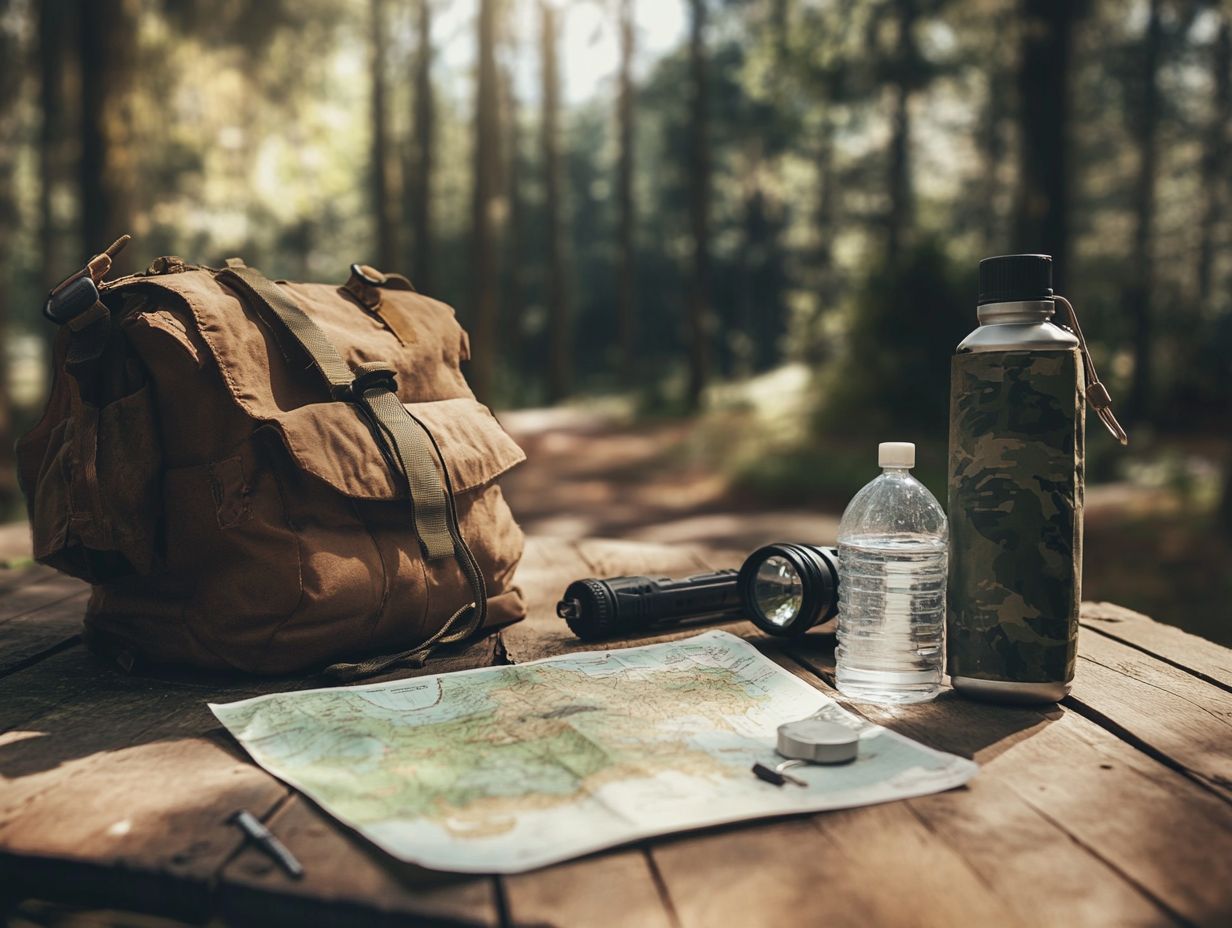
The most common survival gear mistakes include not researching before purchasing gear, not testing gear before an emergency, and failing to pack essential items.
How can I avoid making these mistakes?
To avoid these mistakes, research and read reviews on gear before purchasing. Test gear in a controlled environment, and create a comprehensive packing list.
Are there any specific items that are often forgotten in survival gear?
Yes, some commonly forgotten items include a first aid kit, navigation tools, a multi-purpose tool, and a map and compass to avoid getting lost.
Why is it important to regularly check and maintain survival gear?
Regularly checking and maintaining survival gear ensures it is in good working condition when an emergency arises. It also allows for repairs or replacements to be made before it’s needed.
Can using the wrong type of survival gear be dangerous?
Yes, using the wrong type of survival gear can be dangerous as it may not function properly or may not be suitable for your specific survival situation. It is essential to research and choose gear appropriate for the environment and potential emergencies.
Is it necessary to have multiple sets of survival gear?
It is recommended to have multiple sets of survival gear in different locations, such as a home kit and a car kit, in case of an emergency while away from home. Backup gear is also important in case of damage or loss.

